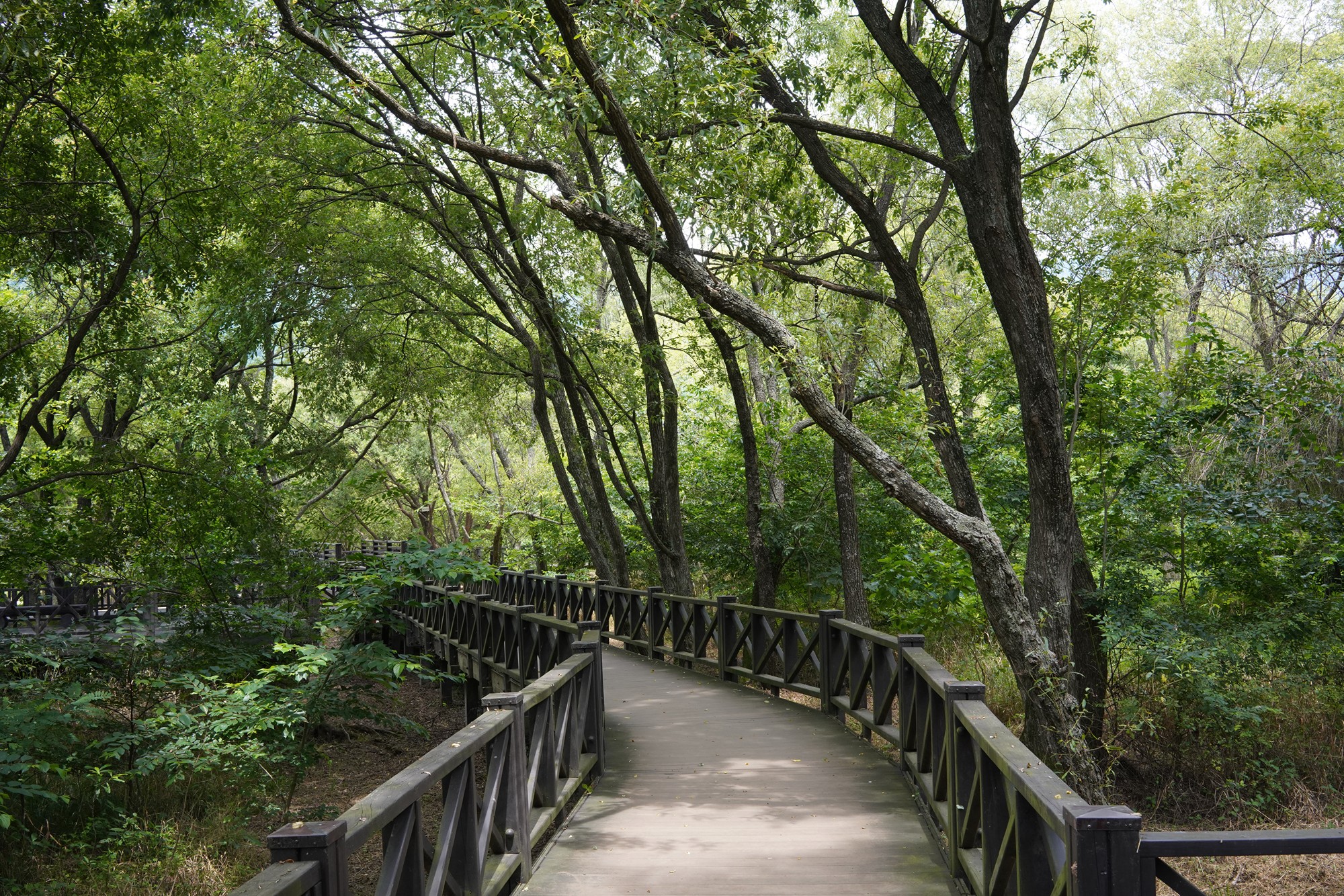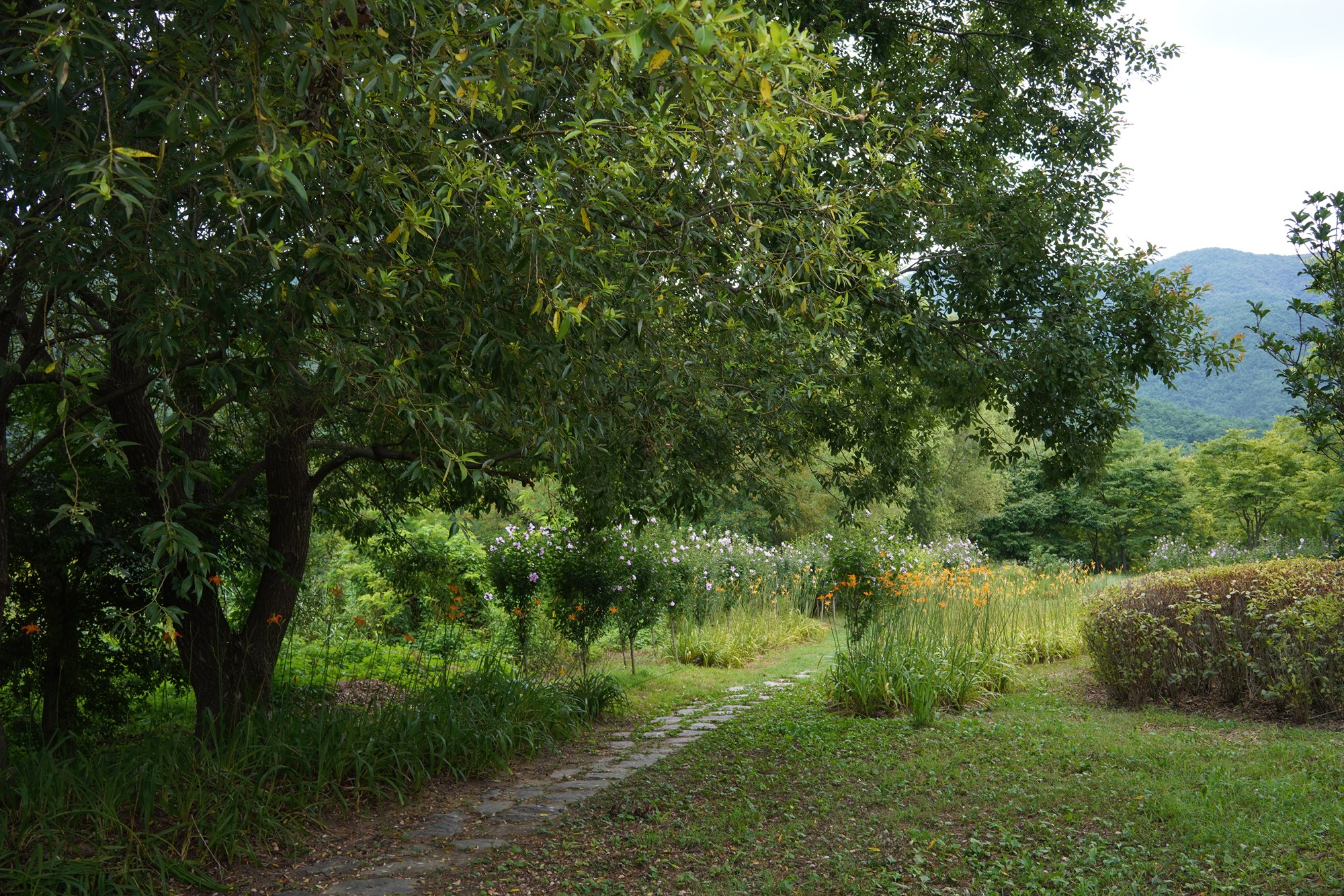Damyang Soswaewon Garden, Korea Gasa Literature Collection, Sikyeongjeong Pavilion, and The Gwangju Ecological Lake Park, South Korea
Soswaewon Garden is an excellent example of a garden from the Joseon Dynasty period. Korea Gasa Literature Collection has a collection of old song lyrics dating back 700 years. Sikyeongjeong Pavilion is one of the locations where the famous lyric writer stayed. 231
Soswaewon Garden: 123 Jigok-ri, Nam-myeon, Damyang-gun, Jeollanam-do, South Korea
Korea Gasa Literature Collection: 877, Gasamunhak-ro, Damyang-gun, Jeollanam-do, South Korea
Sikyeongjeong Pavilion: 산75-1 Jigok-ri, Nam-myeon, Damyang-gun, Jeollanam-do, South Korea
The Gwangju Ecological Lake Park: 7 Chunghyosaem-gil, Seokgok-dong, Buk-gu, Gwangju, South Korea
Date Picture Taken: July 2021
Took another day trip to Damyang from Gwangju by bus.
Soswaewon Garden is a private garden from the Joseon period where Korea’s traditional beauty is preserved. It was built by Yang San-Bo (1503-1557) after he gave up his success when his mentor Jo Gwang-Jo (1482-1519) was killed during political strife.
The garden has two houses. The second house shown below is partially hidden in the photo.
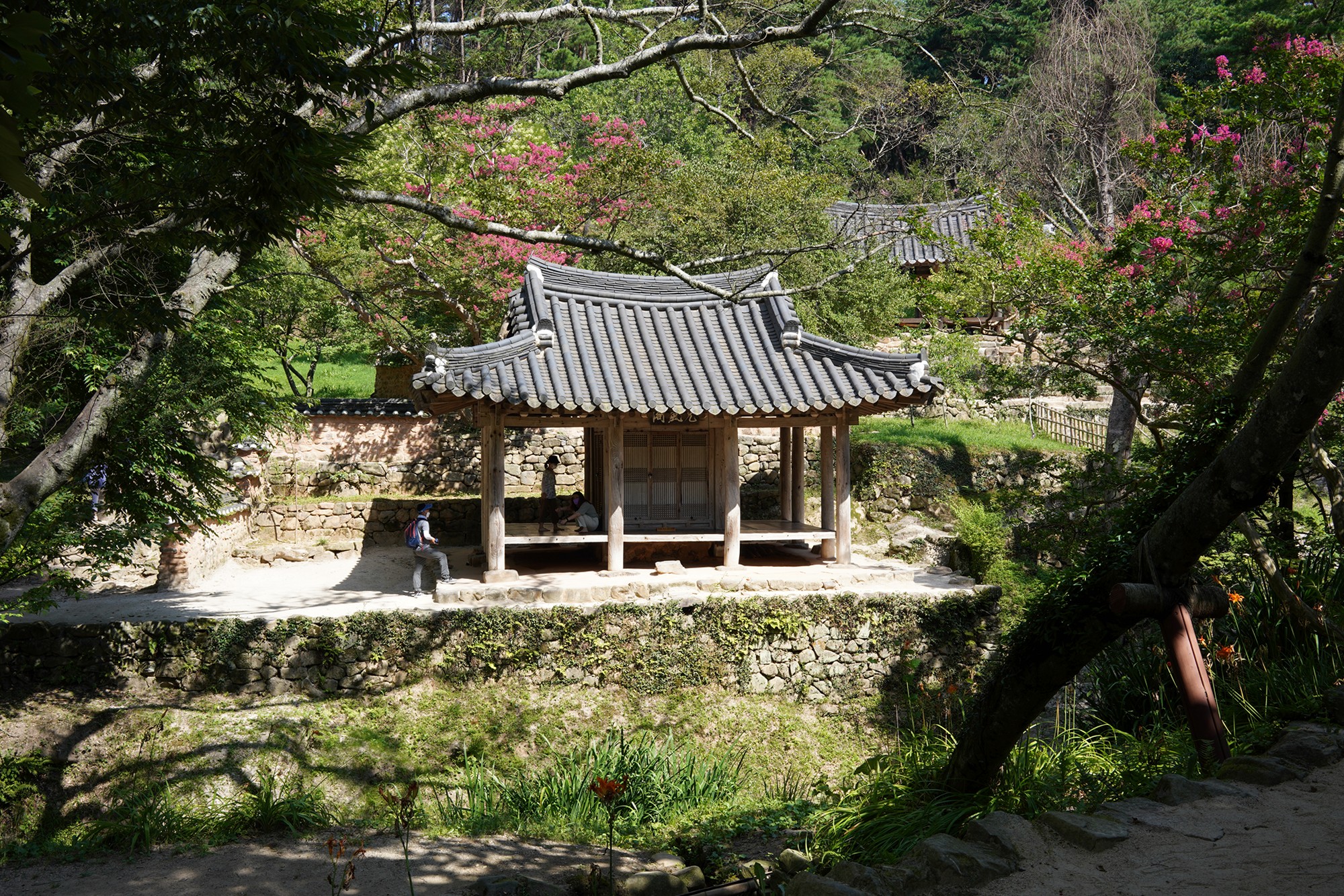
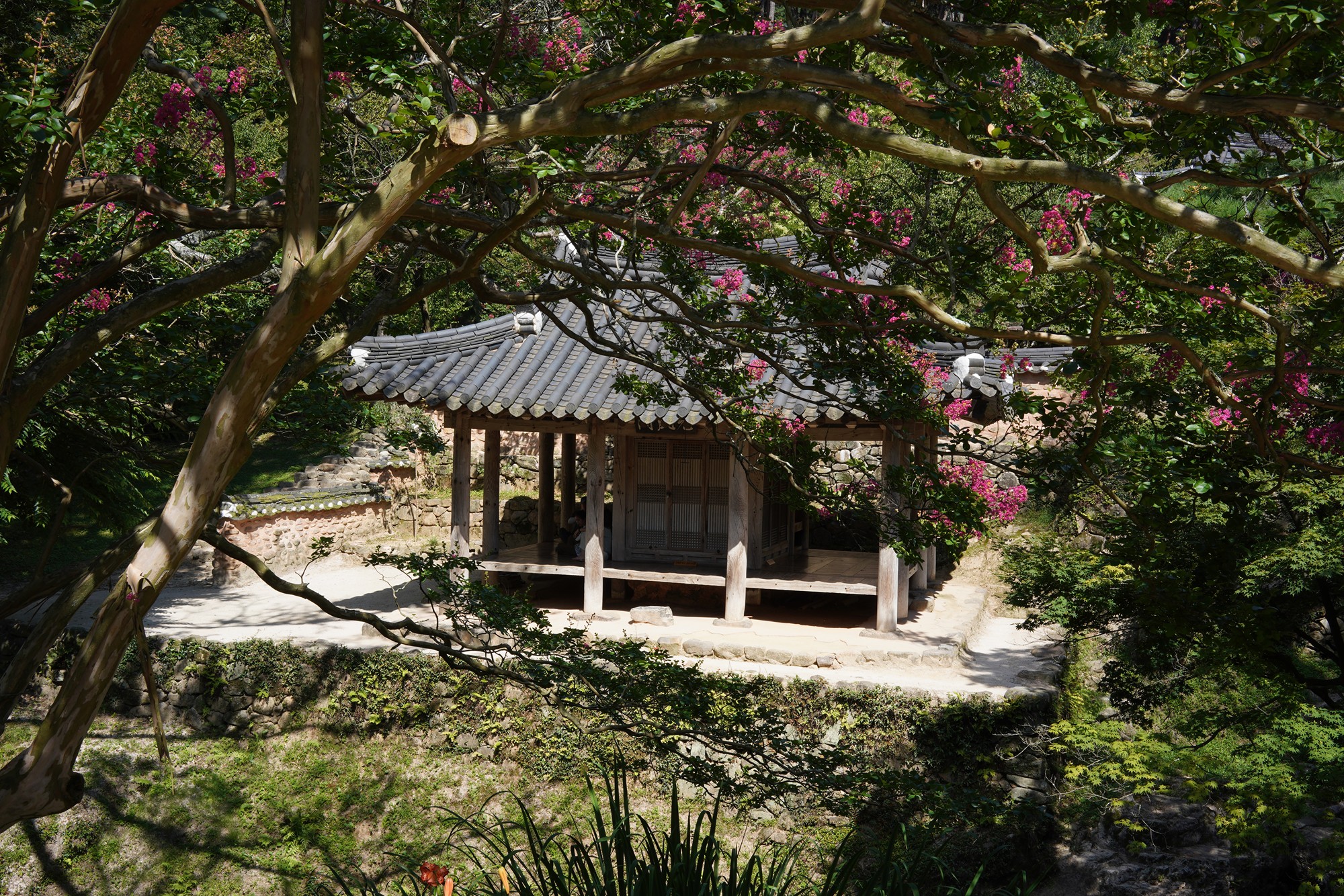
The second house.
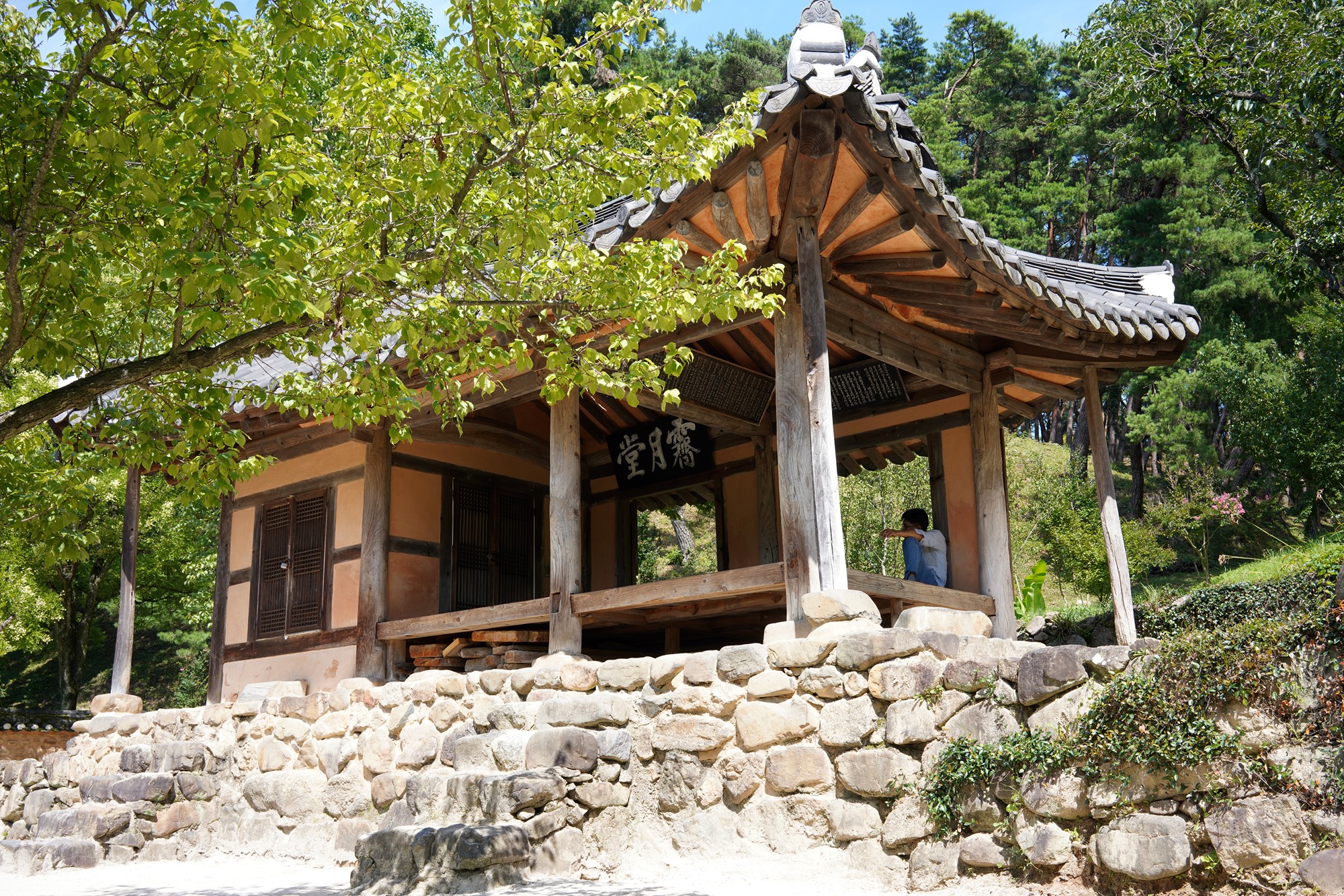
The front yard of the second house.
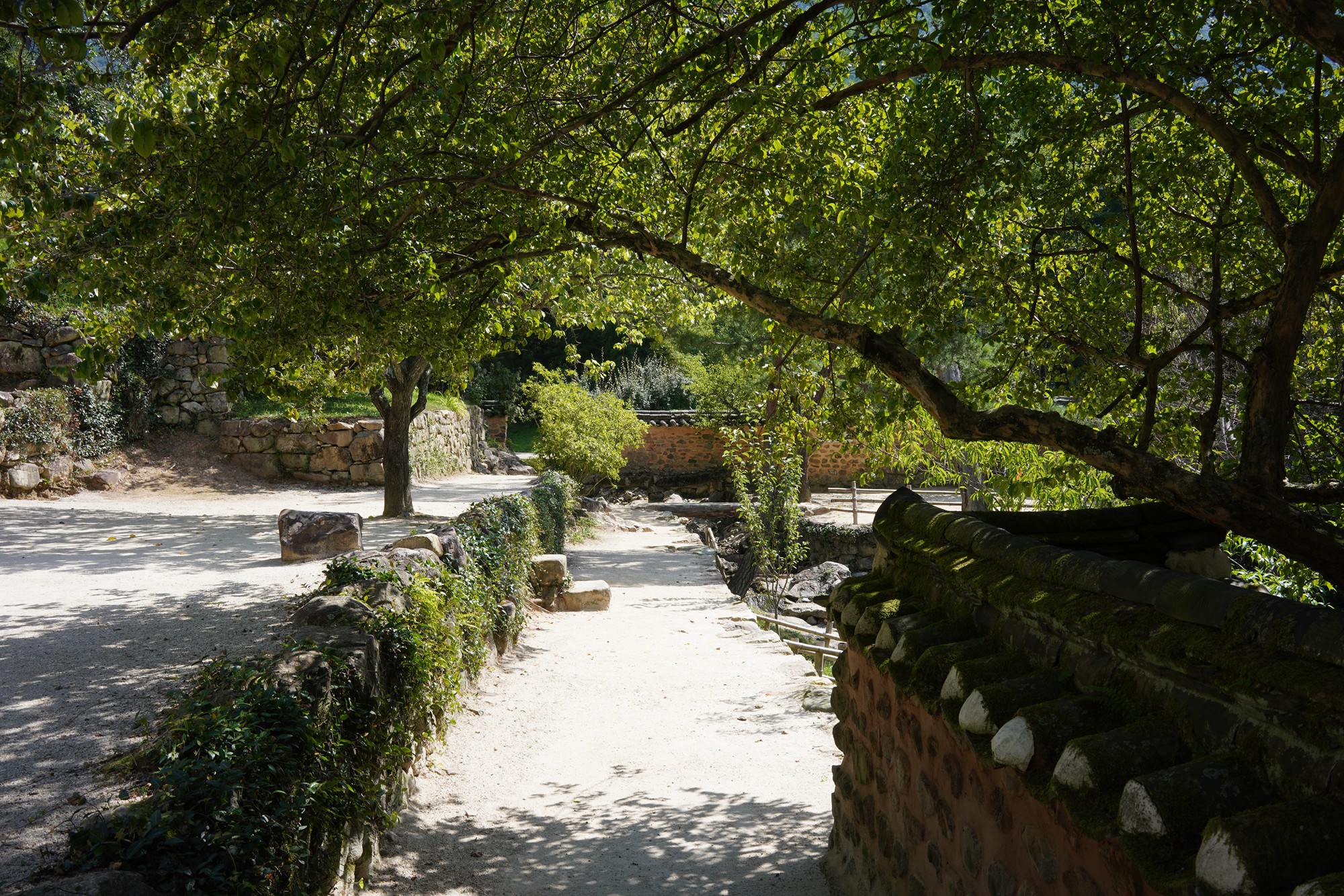
The outer wall of the garden.

About a half-mile from the garden is Korea Gasa Literature Collection Hall. This building has a collection of ancient Korean song lyrics dated from the 13th century to the 19th century.
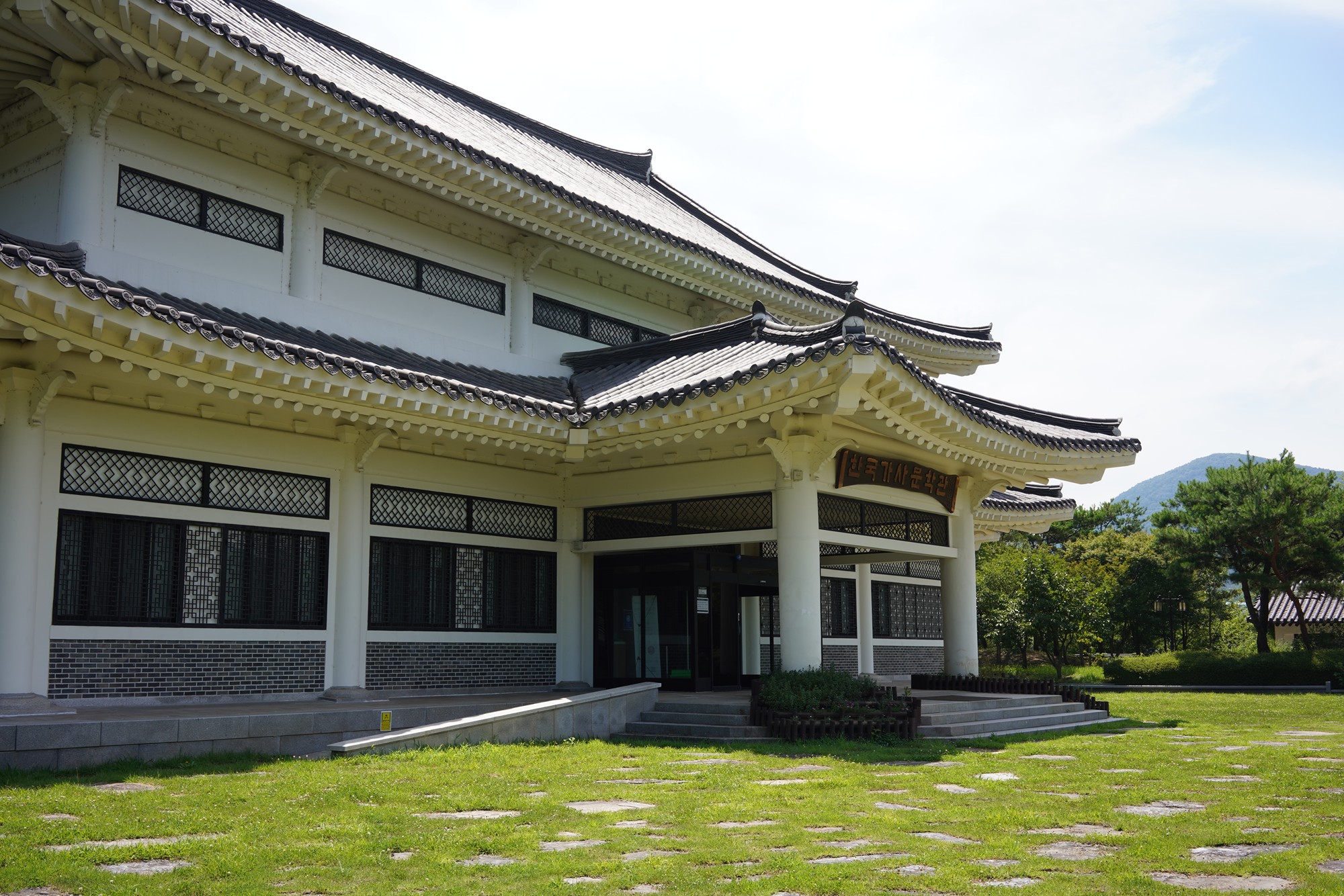
One of the lyrics is diplayed.

A portion of a lyric is translated into modern Korean words.

A closer look at one of the lyrics

One famous lyricist is Songgang. The below shows some of his work.
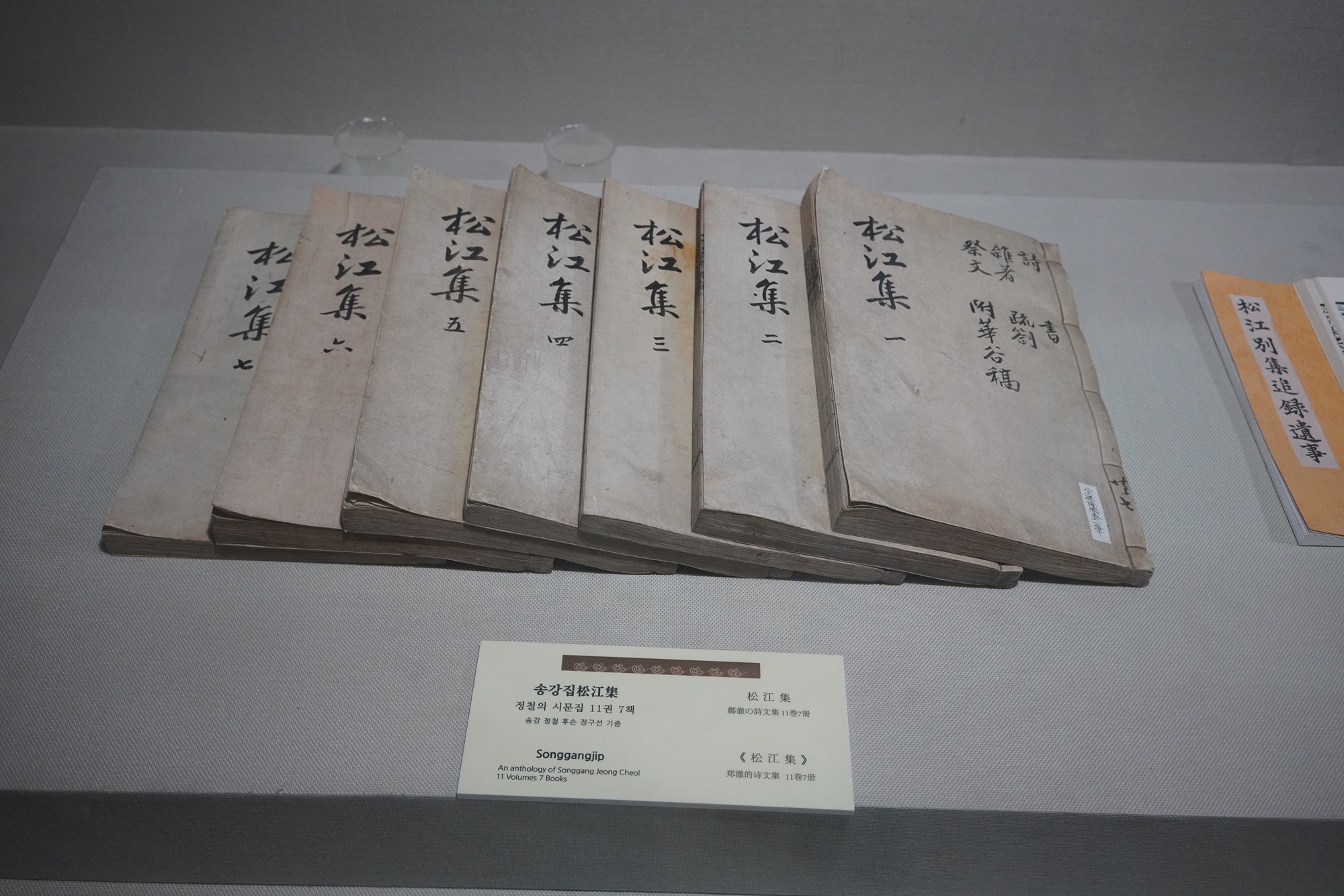
It describes who is Songgang.
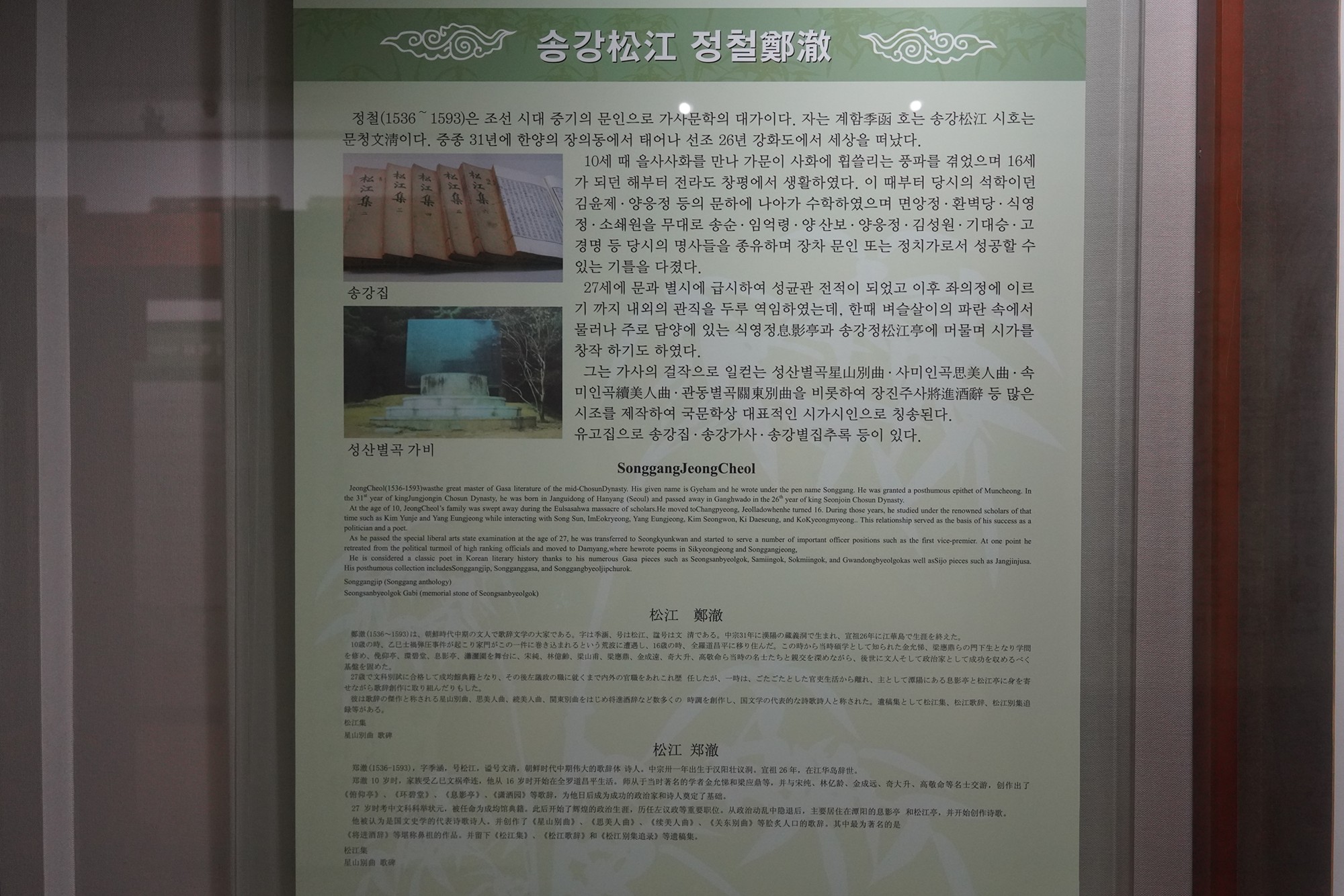
The list of famous Korean lyricists starting from the 14th century.
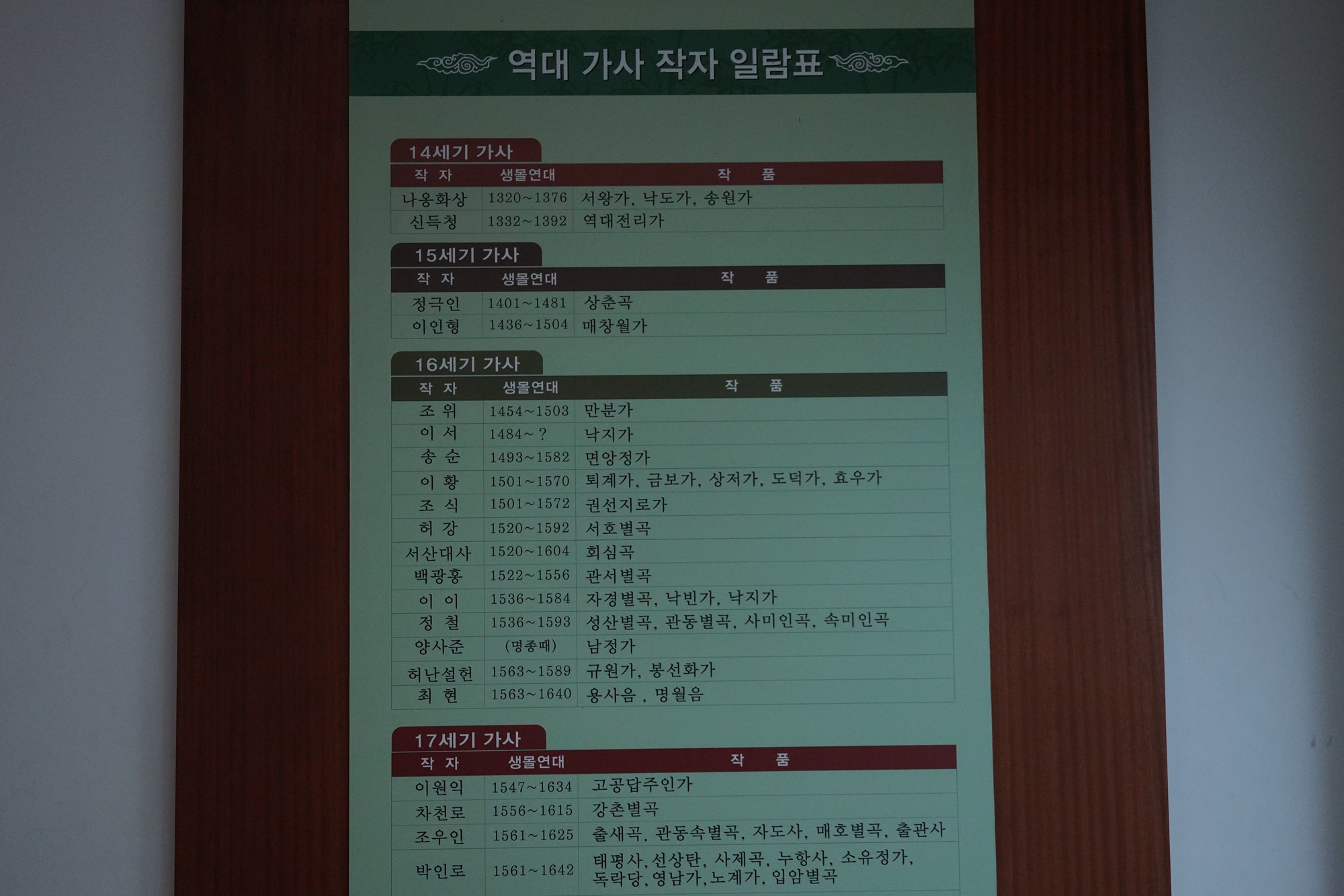
The translation of a lyric into the modern Koran language.
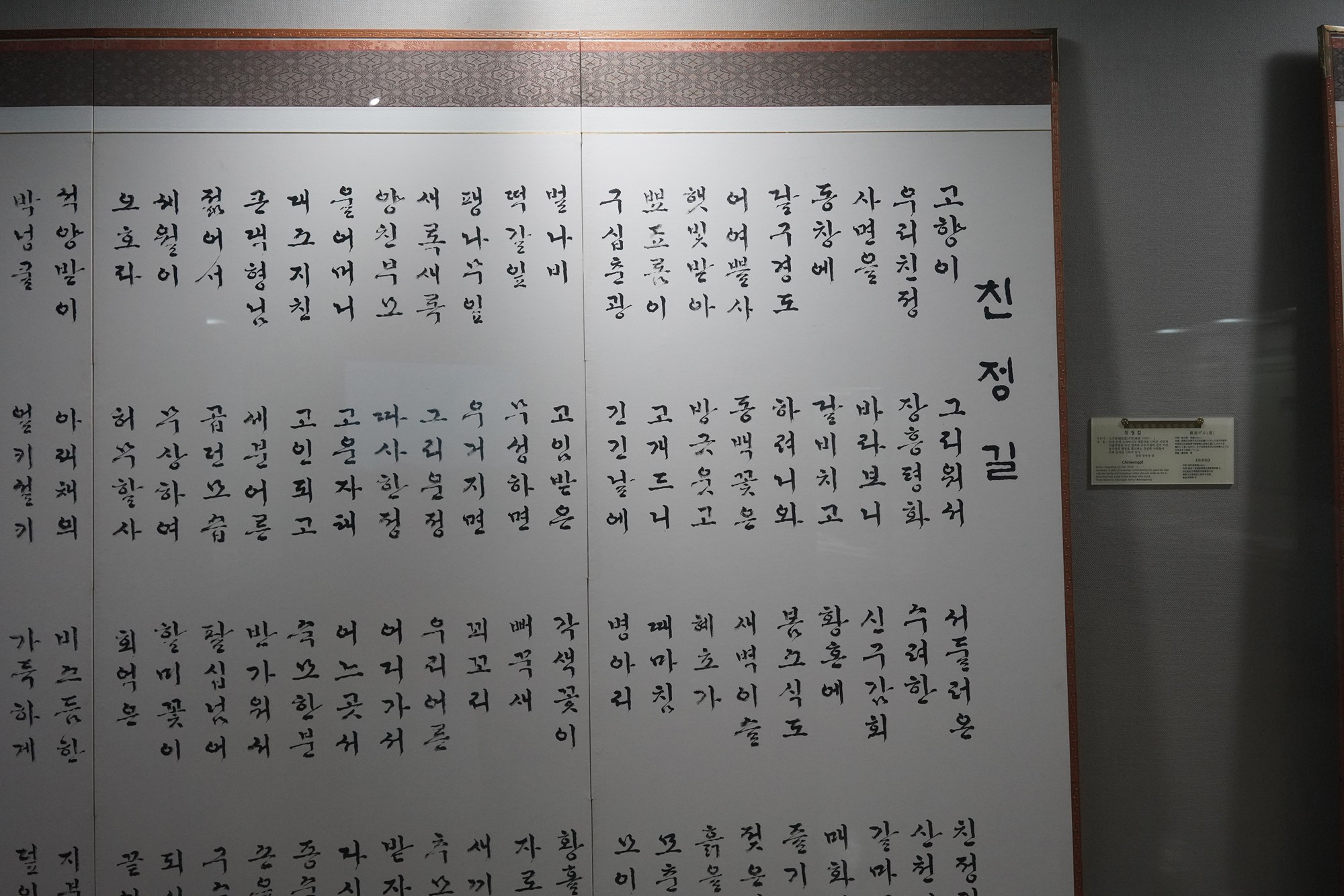
An original copy of a lyric.

The garden of the Gasa Collection Hall
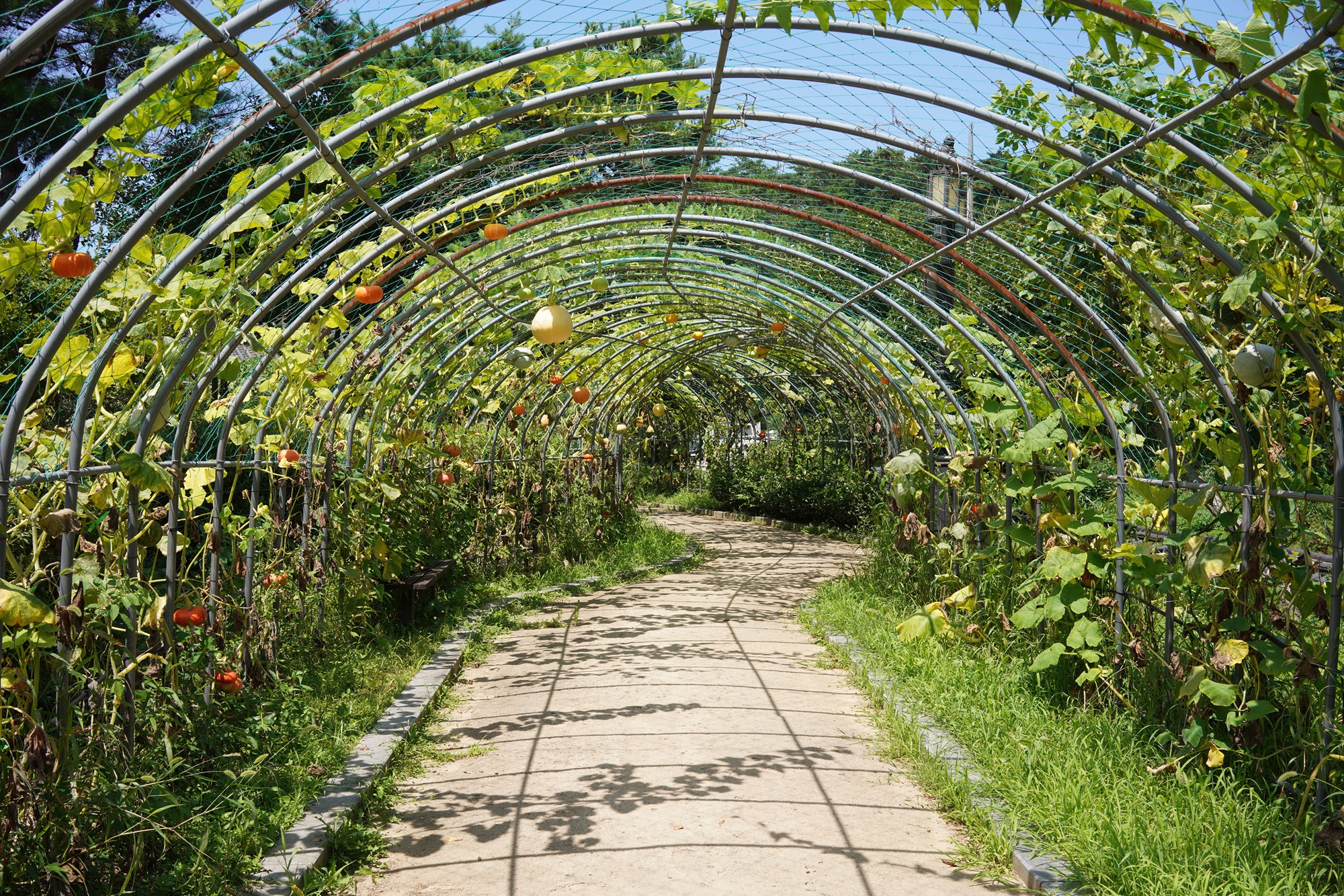
A short walk from the Gasa Collection Hall is Sikyeongjeong Pavilion. This Pavilion is where Songgang stayed and wrote many of his lyrics.
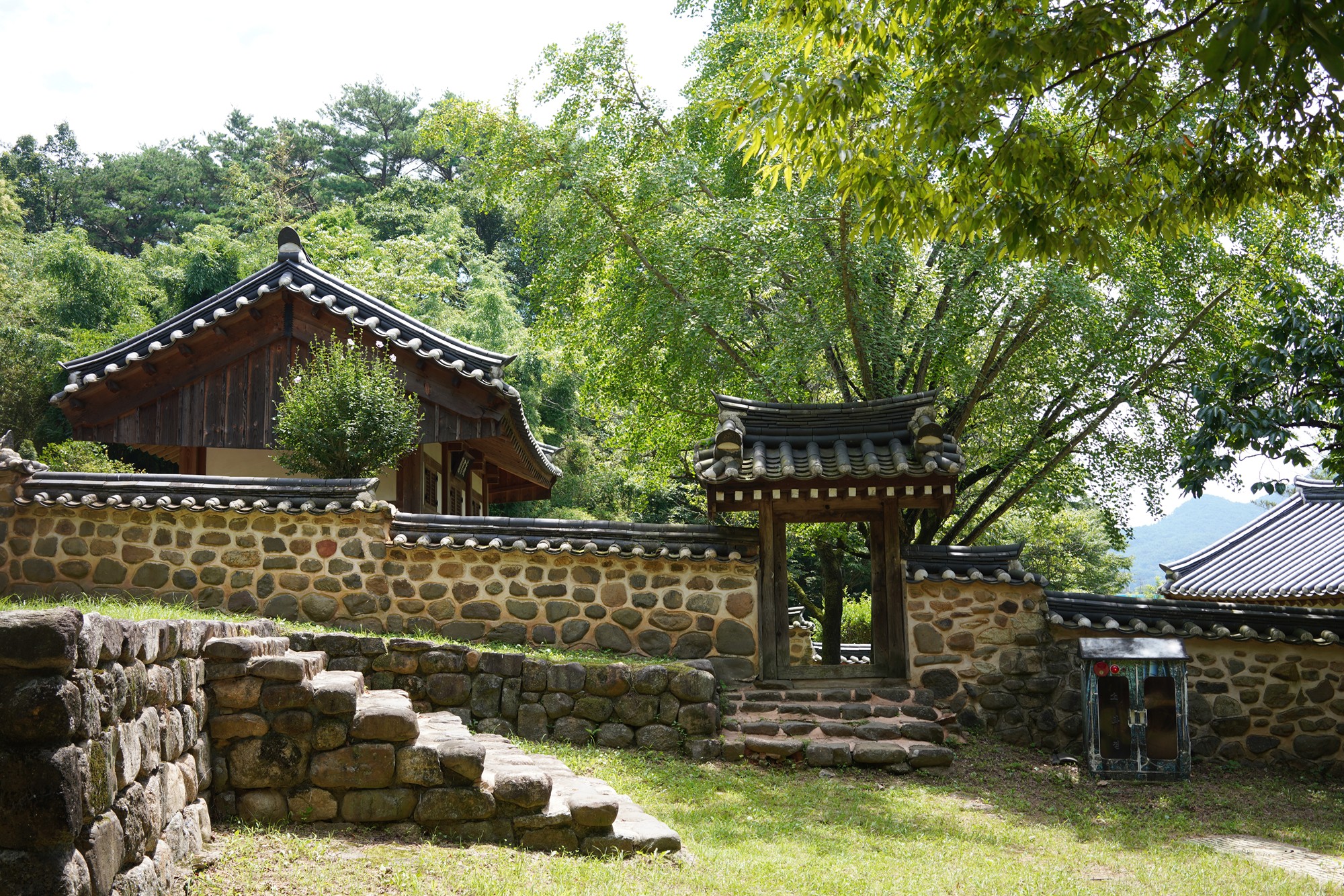
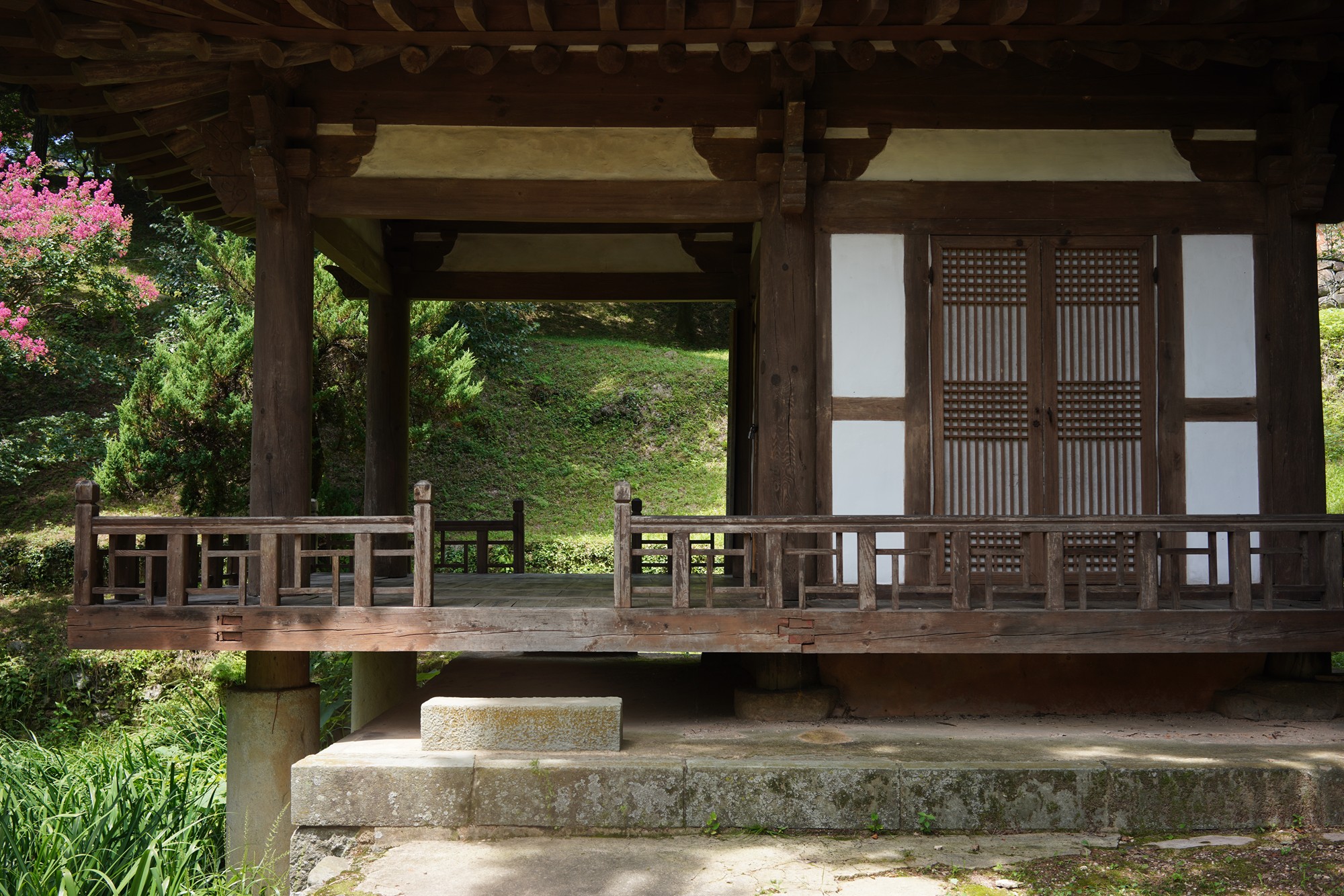
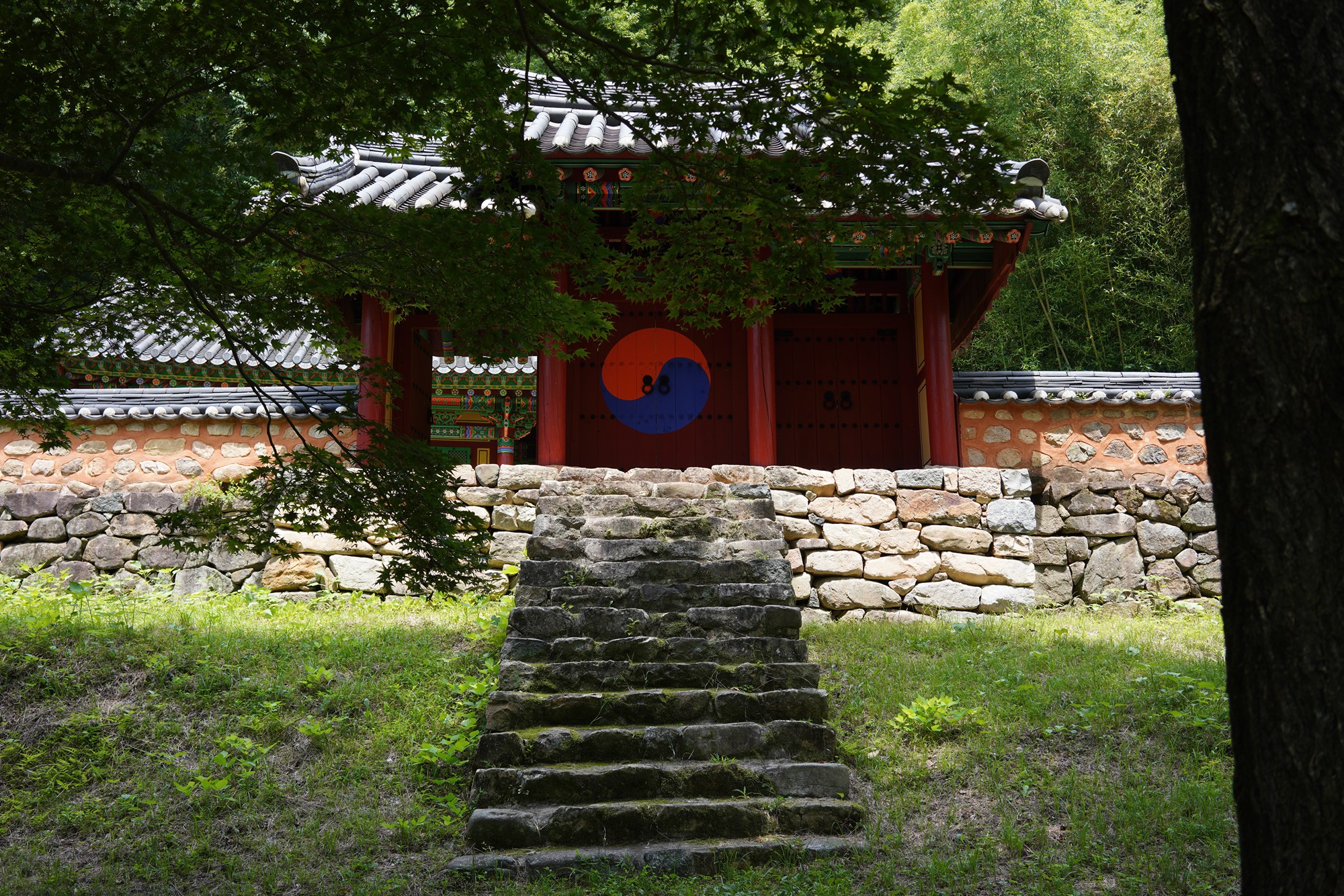
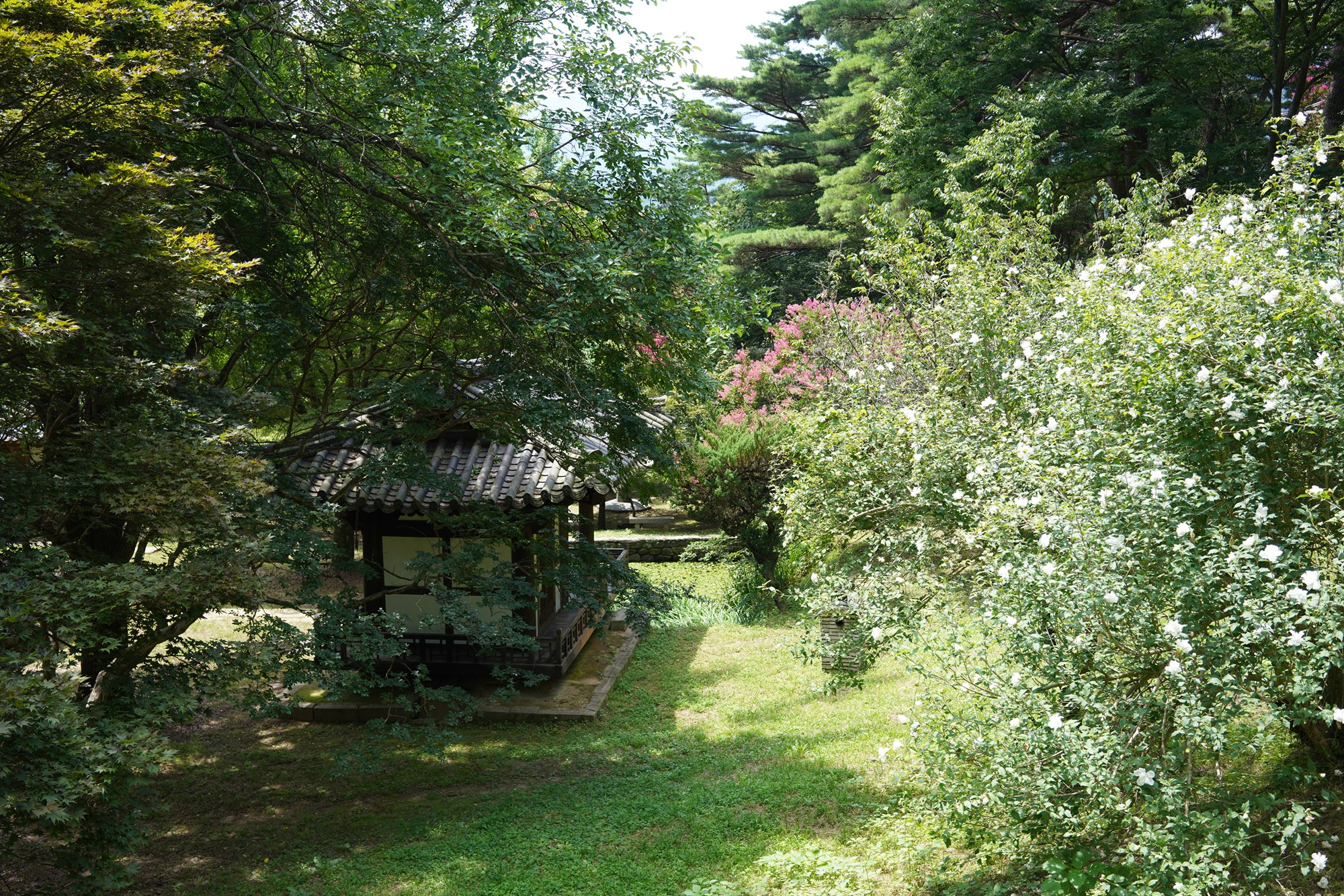
Another short walk from the Gasa Collection Hall is the Gwangju Ecological Lake Park.


